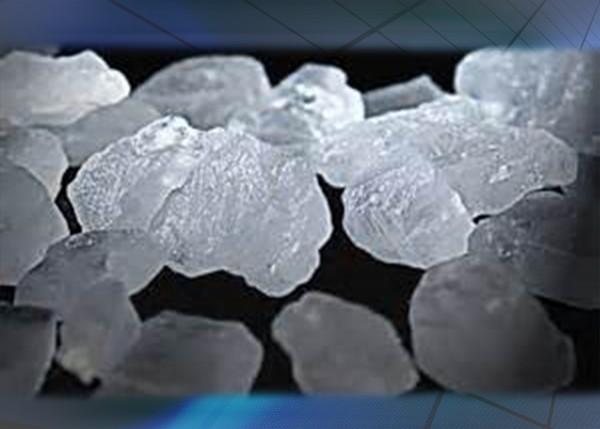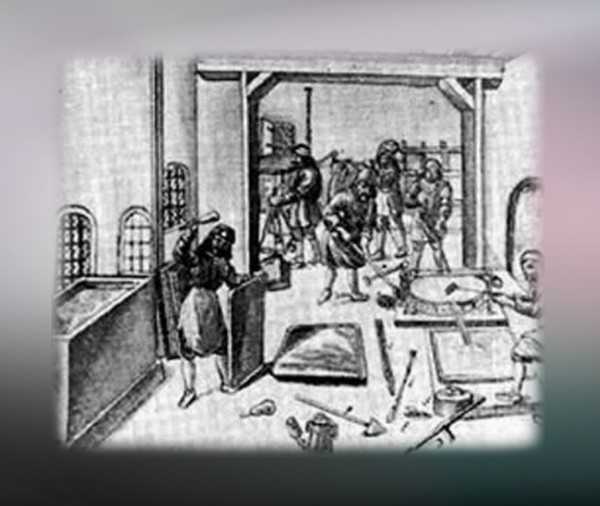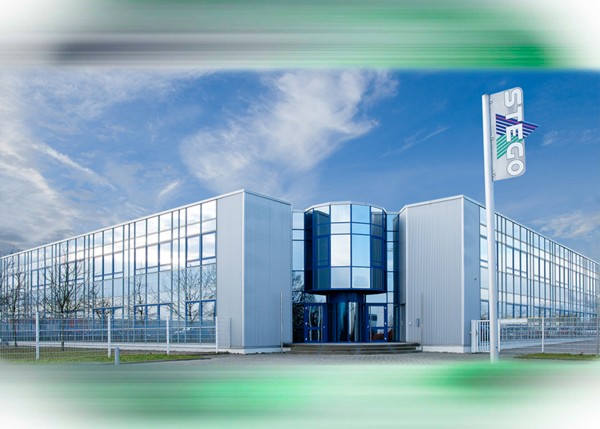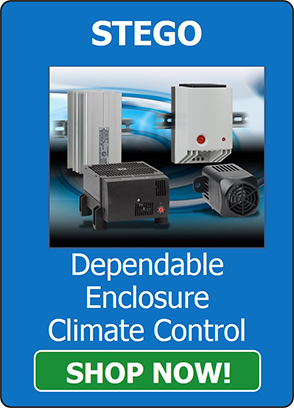Salt has been an important element in the history of civilization. Once discovered that it could preserve food, great cities were established where salt was plentiful. Wars were fought and fortunes made because of salt. Even the early Romans built “salt roads” to transport the valuable commodity back to Rome.
Building on the history of “white gold” or salt in the picturesque town of Schwabisch Hall in Southern Germany, the founders of STEGO strived to be similarly successful with their own concept — the design and manufacture of heaters for industrial enclosures.
 Thermal management is essential to many industries as well as personal use of electronic devices. Without a way to keep a device from overheating (or in some cases being too cold), techniques must be used to dissipate heat to improve reliability and prevent premature failure. “The thermal management industry has grown from initially being a small niche market to an established one,” explained STEGO Vice President Sven Eisenhauer. “STEGO was at the forefront of the market and continues to provide products and applications that flawlessly operate in a variety of adverse climatic conditions,” Eisenhauer continued.
Thermal management is essential to many industries as well as personal use of electronic devices. Without a way to keep a device from overheating (or in some cases being too cold), techniques must be used to dissipate heat to improve reliability and prevent premature failure. “The thermal management industry has grown from initially being a small niche market to an established one,” explained STEGO Vice President Sven Eisenhauer. “STEGO was at the forefront of the market and continues to provide products and applications that flawlessly operate in a variety of adverse climatic conditions,” Eisenhauer continued.
Among the worst enemies to electrical systems are heat, cold, and humidity. With its line of thermal management products, STEGO can support a wide variety of challenging applications that demand thermal protection, including the climates of deserts, mountainous regions, and tropical areas. For example, the company has designed a custom heater for an environmental monitoring system used in the northern climates close to the Arctic Circle.
Developing STEGO Products
To develop products to withstand these harsh conditions, STEGO focuses on innovative research and design. The company’s R&D lab has an experienced engineering team that enables them to support customers with specific needs. In the first years of STEGO, their initial heater designs used semiconductor heating elements which proved to be extremely versatile and reliable. Since that time, research and development has fueled a number of groundbreaking designs, many of which are now patented and design protected. Today, the initial line of heaters from STEGO has been broadened to a larger spectrum of different size heaters as well as complementary products including thermostats, humidity controls, enclosure lights, filter fans and various accessories.
D esign continues to be vital to STEGO. During the company’s product design phase, they emphasize features like compactness, aesthetics, quality, added functionality, and user friendliness. One example of this is STEGO’s LED 025 Series of enclosure lights that are extremely compact and energy efficient and can be purchased in a variety of configurations and voltages, including 24-48VDC and 100-240VAC; screw, magnet or swivel mounts; with on/off switch or motion sensor; stand-alone or daisy-chained up to 10 units. Design matters to STEGO but so does listening to the customer and being flexible with design options allowing them to positively impact sales.
esign continues to be vital to STEGO. During the company’s product design phase, they emphasize features like compactness, aesthetics, quality, added functionality, and user friendliness. One example of this is STEGO’s LED 025 Series of enclosure lights that are extremely compact and energy efficient and can be purchased in a variety of configurations and voltages, including 24-48VDC and 100-240VAC; screw, magnet or swivel mounts; with on/off switch or motion sensor; stand-alone or daisy-chained up to 10 units. Design matters to STEGO but so does listening to the customer and being flexible with design options allowing them to positively impact sales.
At the heart of the company is STEGO’s slogan “Simply innovative. Better for sure.” The company incorporates this mission into everything they do from the products they design and manufacture to the corporate culture. Eisenhauer explains: “Our employees enjoy a customer-centric, safe, fair and transparent work environment that encourages team work with room for personal growth. Our aim is to always provide the highest achievable design and quality standards that will meet our customers’ technical and economic needs, while providing a dynamic and enjoyable workplace free of prejudice or harassment.”
While STEGO continues its commitment to customers and employees, the company also has an eye on the future. Just as the Internet and email gradually took the place of more traditional means of communication, thermal management has also undergone a transition from a lower priority technical “add on” to a trusted component of control systems engineering. “While thermal management by default cannot have a higher priority than the core functional components of any control system, most engineering capacities today acknowledge its necessity and legitimacy,” said Eisenhauer. “Where 20 years ago we still had to convince customers of better options than, say light bulbs for heating, the same customers today appreciate the variety of heaters and auxiliary products now available from STEGO.
 Needless to say, one welcome side effect of the increased awareness and demand of thermal management products is the fact that it has allowed us to continually design new and exciting products and to maintain our position as one of the leading manufacturers for such products in the world.”
Needless to say, one welcome side effect of the increased awareness and demand of thermal management products is the fact that it has allowed us to continually design new and exciting products and to maintain our position as one of the leading manufacturers for such products in the world.”
Eisenhauer continued: “Over the past three decades, we have built a reputation as being a very innovative company, typically developing three to five new products a year. Our team of engineers is allowed to creatively think outside the box. This is supported by constructive feedback from our sales staff as well as members of our purchasing and quality departments. Also, our agile size allows us to overcome some of the hurdles of bureaucracy that are sometimes found in larger corporations, leading to relatively short design to market times and continued development of new products.”
This is how STEGO positions itself for the future. As electronics become more and more a part of people’s daily lives, the drive toward automation and consumer engagement and entertainment points to a continued growth for thermal management for years to come. In addition, the growing market also lends itself to a miniaturization of these systems that will lead to smaller components and ultimately more compact thermal management products.
STEGO is not only looking at electronics for the future but renewable energy as well. As many countries and businesses around the globe look to new sources of energy, STEGO too, is keeping up with new technologies and providing newly designed products for these emerging industries. Recently, they have been working with many leading turbine manufactures to enhance the wind energy market in the United States through the company’s heaters and thermostats.
It’s this type of thinking that STEGO’s founders had in mind when they made the connection of the success of salt in their small German town to thermal management devices. And, that idea has been well worth its salt. [hozbreak]

